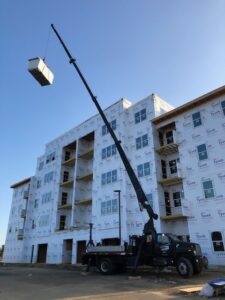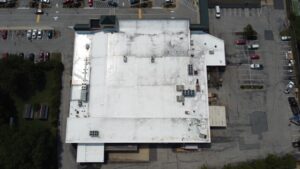Not all commercial flat roofing systems are created equal. The roof of any commercial building is more than just a protective cover. It’s a critical component that safeguards the infrastructure and its occupants from various environmental elements. Therefore, understanding different commercial flat roofing materials, types & costs is essential to selecting the best roofing system for your commercial building.

Understanding Commercial Flat Roofing Systems
There are many commercial flat roofing materials, types & costs to consider. The main types include:
Maintenance, Lifespan, and Costs
The lifespan of a flat roofing system depends on the type and material used. BUR systems can last up to 30 years, MBR systems about 20 years, and EPDM roofs can last between 15 to 25 years with proper maintenance.
As for costs, they can vary significantly based on the type of system, material used, size of the roof, and localized roofing market trends and conditions. For example, BUR systems are generally the most expensive due to their durability, while MBR and EPDM systems are often less costly.
Choosing the right commercial flat roofing system depends on various factors like your budget, structural capacity of the building, and specific needs. While BUR systems offer superior durability, they may not be suitable for buildings with weaker structures due to their weight. MBR systems, on the other hand, are a good balance between cost and durability, while EPDM systems are lightweight and easy to install.

DCIM100MEDIADJI_0077.JPG
Thoroughly consider your building’s needs, consult with a professional roofer, and make an informed decision that balances cost, durability, and maintenance needs.